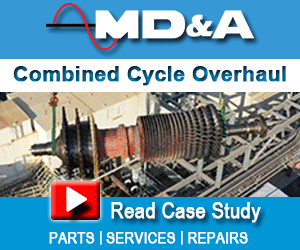Discussion threads ranged from sulfur buildup in stop/speed ratio valves that could prevent restarting after a unit trip to the value of a flash drum in the continuous blowdown line enabling beneficial use of the steam produced to the value of inlet bleed heat for deicing and unit turndown. Plus others.
An attendee reported a trip on low lube-oil pressure revealed that regulator valves had not been serviced in 32 years of service and the brittle diaphragms failed. The diaphragms on valves serving other units were replaced “just in time.” Another user, who reported going 24 years before changing out diaphragms, warned, “Make sure you reinstall the orifice.”
Other notes from the session illustrating the value of participating in the Frame 6 Users Group’s annual meeting, included the following:
-
- Discussion of torque-converter orifice fitting issues.
- Upgrade of a jaw clutch to SSS clutch.
- Hardened coupling that led to hydraulic ratchet-pump failure.
- How to avoid coupling failures on your load gear and auxiliary lube-oil pump.
- Recommendation: Conduct accessory- and load-gear inspections during majors. Take the necessary precautions to avoid an oil spill.
- Pitting of load-gear tips or teeth was reported by several plant personnel. Consensus was that everywhere there is a nozzle, there’s pitting at the tip of the tooth.
- Suggested inspection interval for AC auxiliary and DC emergency lube-oil pumps was five years.
- Failures of flexible hoses were reported between the reservoir and hydraulic pump.
- Checking of nitrogen pressure in the hydraulic oil accumulator was recommended during major inspections.
- Coupling issues in the shaft hydraulic oil pump were reported by several participants. Replacement intervals varied from annually to each hot-gas-path inspection to every major.
- Problems with an oil mist separator at one plant were traced to weak vacuum.





